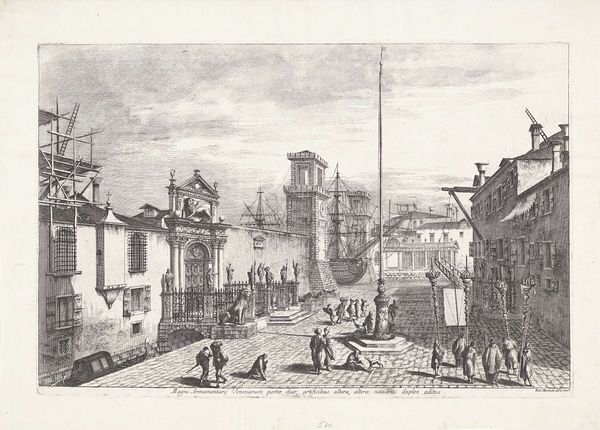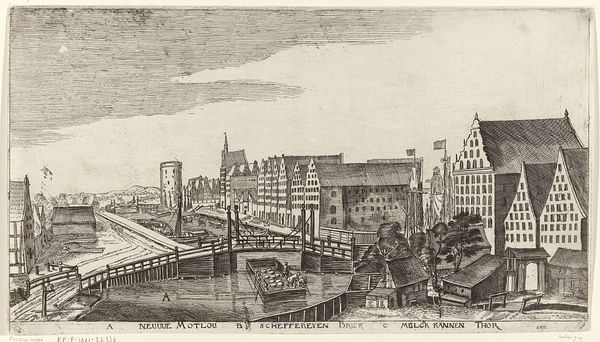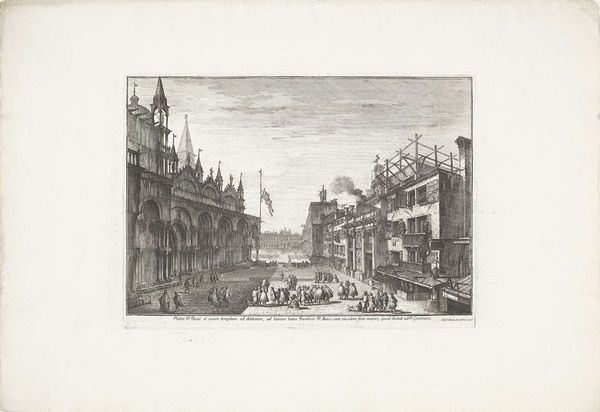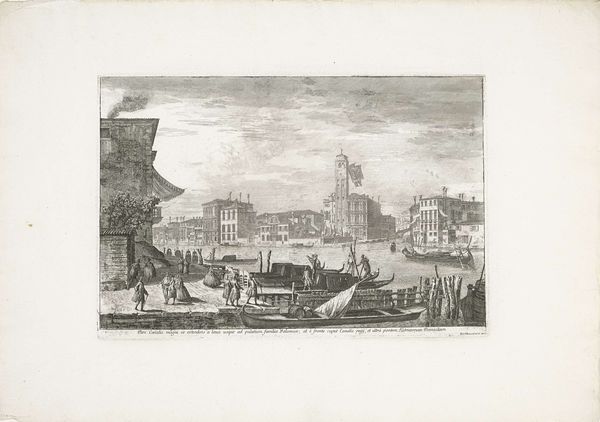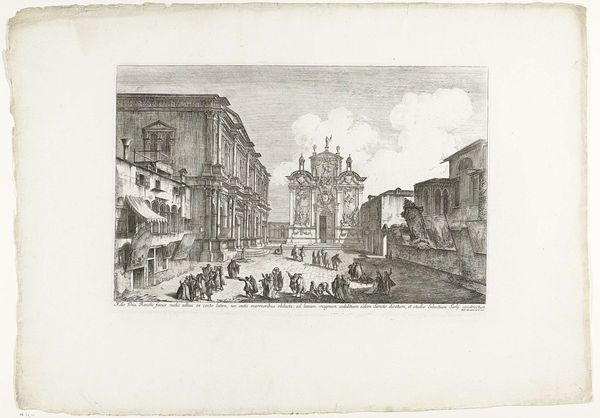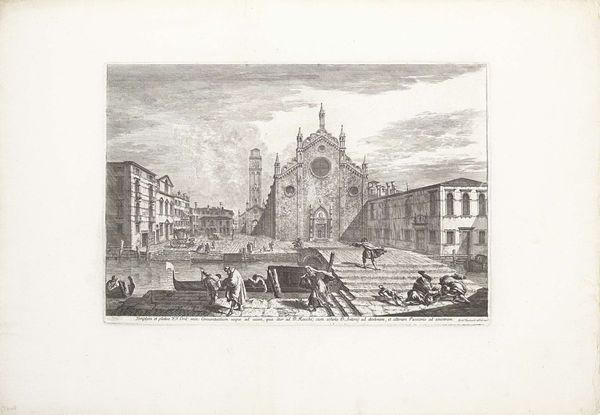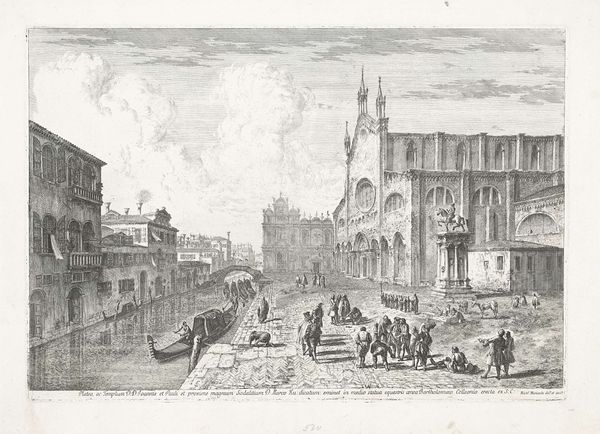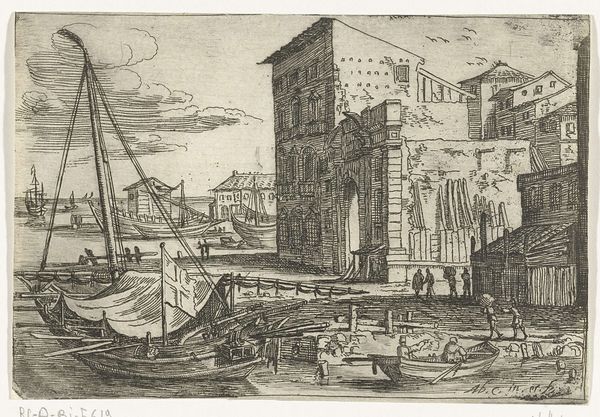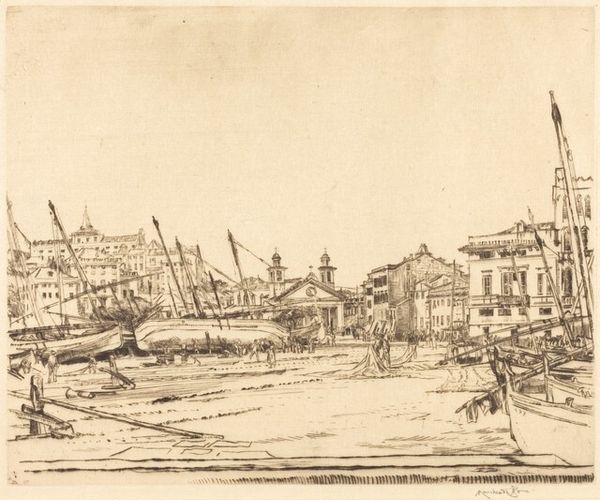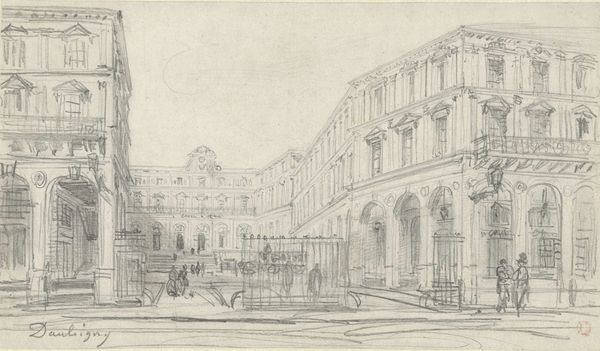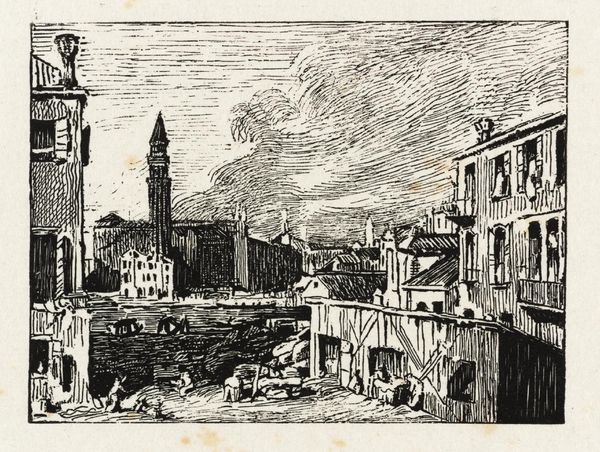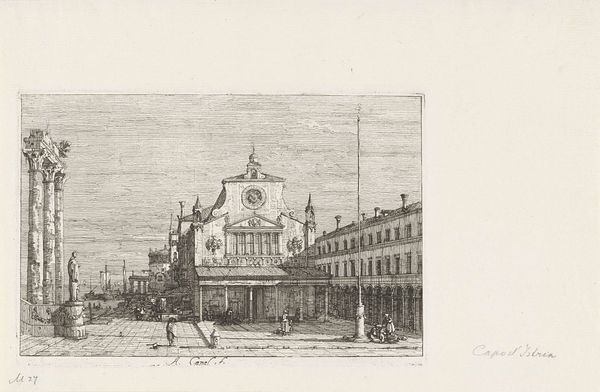
print, engraving
#
venetian-painting
#
baroque
# print
#
landscape
#
perspective
#
cityscape
#
history-painting
#
engraving
Dimensions: height 142 mm, width 211 mm
Copyright: Rijks Museum: Open Domain
This print, depicting the Doge's Palace and Prisons in Venice, was made by Canaletto, likely around the mid-18th century. The technique here is etching, a printmaking method that translates the artist’s hand to paper via a chemical process. Canaletto would have covered a metal plate with a waxy ground, then drawn through it with a stylus. The plate was then immersed in acid, which bit into the exposed lines, leaving an image in relief. Finally, ink was applied to the plate and then transferred to paper through a press. The appeal of etching was its relative ease and directness, as compared to say, engraving, which requires considerable strength and skill with specialized tools. Etching enabled a freedom of line more akin to drawing. This was critical to Canaletto’s practice; prints like this one were made available to a growing tourist market. They allowed visitors to take Venice home with them, in a relatively affordable form. The print wasn’t just an image, but a commodity, tied directly to the city’s economy and social life.
Comments
No comments
Be the first to comment and join the conversation on the ultimate creative platform.
